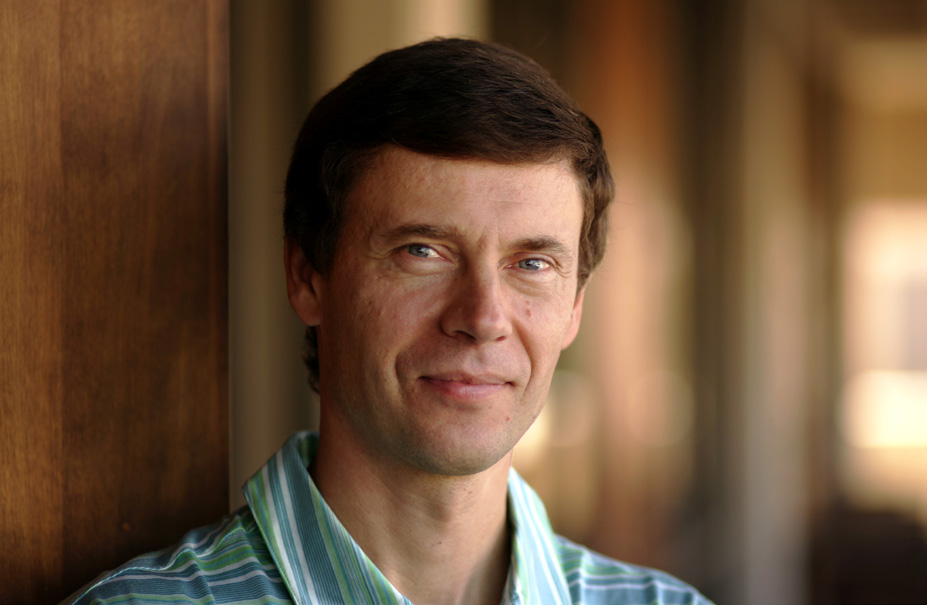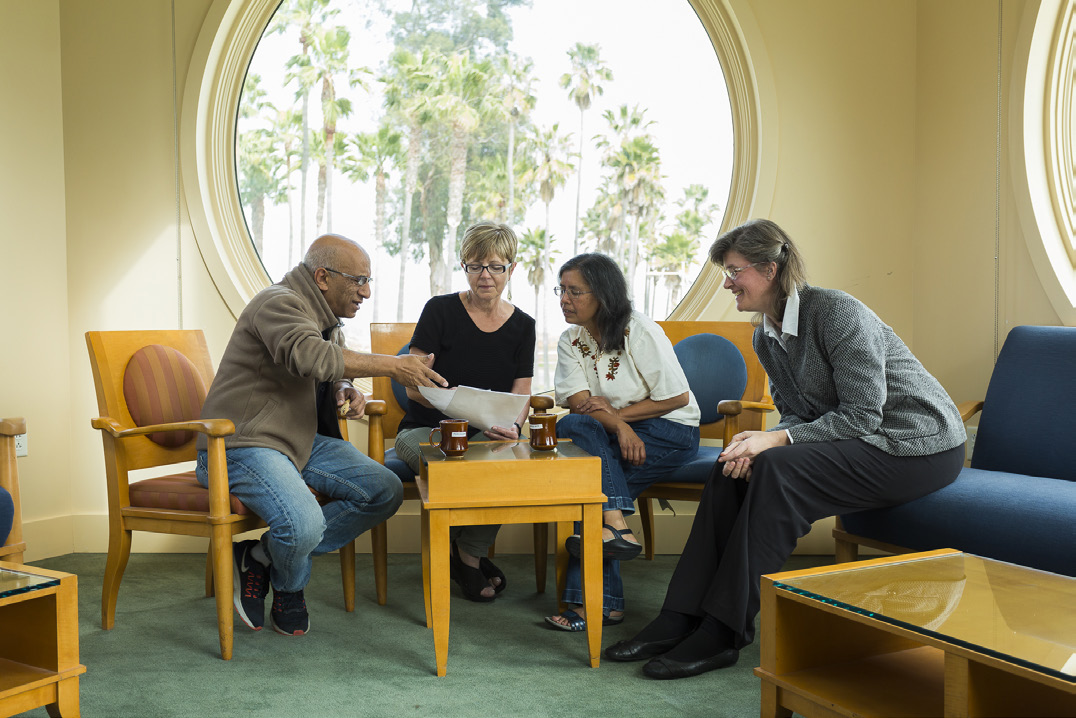 Alexei Kitaev
Alexei Kitaev
What do a bucket of superfluid helium and a black hole have in common? How is the circuit board of a quantum computer related to Einstein’s gravity equations? How can we use string theory to understand the behavior of a chunk of rock, cooled to near absolute zero? It is exactly this type of unorthodox mix of questions and ideas that can unexpectedly conjure up new breakthroughs. For the physicists who participated in the “Entanglement in Strongly-Correlated Quantum Matter” program at KITP in Spring 2015, such a breakthrough would be witnessed first-hand, manifest in a set of two talks (A simple model of quantum holography; part 1, part 2) given by the legendary Alexei Kitaev, then KITP Permanent Member, now professor at Caltech.
As its name suggests, the idea of quantum entanglement, once famously referred to by Einstein as “spooky action at a distance”, was the focus of their efforts. Entanglement is the counter- intuitive, non-local correlation quintessential to quantum theory. It lies at the heart of the power of quantum computers, helping us understand and organize quantas of information. Increasingly, the concept of entanglement has been popping up in many disparate field of physics. Quantum computing, condensed matter, high energy, and gravity are all areas where physicists are re-tooling their theories to accommodate entanglement as a foundational idea.
 |
 |
Click to play A simple model of quantum holography; part 1 and 2
One of the most exciting themes echoed in the corridors and scribbled on the blackboards of Kohn Hall was the apparent relationship between two completely different ideas. One, conformal field theory (CFT), is the theoretical structure of special types of phase transitions, present both in real matter, and in the quantum structure of space-time itself. The other, a type of classical gravity with negative (anti-de Sitter, AdS) curvature, was discovered recently to share exactly the same mathematical structure as a CFT, albeit in a higher dimension. This apparent “holographic” correspondence is particularly tantalizing to physicists, as it enables those on one side of the equation, say condensed matter theorists studying phase transitions in superfluid helium, to speak to those on the other side, say gravitational physicists whose purview is usually the realm of black hole horizons. A particular theme of this KITP program was the study of entanglement, on both sides of the correspondence, by men and women who previously thought their respective physics languages had long diverged, late in graduate school.
On April 7, 2015, a large crowd had gathered in the KITP auditorium, and Alexei took the stage for the first of his two chalkboard talks of the program. In the now famous online videos of the session, one can sense the quiet astonishment of the crowd as Alexei, in his typical modest and unassuming manner outlines how a certain model of randomly interacting electrons might lead, in a computable way, to an exact theory of gravity. A remarkable scene unfolds in slow-motion, as Alexei does what he does best, defining a simple model understandable to all physicists, which in this case gives a concrete example of the coveted AdS/CFT correspondence. His idea, a simple variant of a model introduced by Subir Sachdev and Jinwu Ye in 1993, has since this time been named the “SYK model”, sparking a world-wide phenomena of intense study. It has raised many new questions on the nature of holography, and its relationship to quantum chaos, transport, and hydrodynamics. So influential is the idea that these two talks are already the most-watched in KITP’s 29-year old online talks archive, with about 7,000 views to date.
 KITP visiting scientists collaborating in the Tower Room at Kohn Hall
KITP visiting scientists collaborating in the Tower Room at Kohn Hall
Pictured from left to right: Sriram Ramaswamy, Indian Institute of Science; M. Cristina Marchetti, Syracuse University; Bulbul Chakraborty, Brandeis University; and Karin Dahmen, University of Illinois at Urbana Champaign.Photo by Matt Perko.
While unique in its impact, Alexei’s idea is exactly the type of breakthrough fostered by the KITP environment, where physicists from all walks and creeds gather to speak a common language, share ideas, and explore each others’ fields. So rich is the new frontier sparked in 2015, that the KITP will host a new program in late 2018, entirely dedicated to the SYK model and the lessons that it is teaching physicists on the nature of reality and the interconnectedness of information, matter, and space-time. Like in the entanglement program that birthed it, it is hard to predict what will result from this new effort to bring physicists with a diverse range of tastes together under one roof. But if I’ve learned anything in the unique environment of the KITP, its that breakthroughs can happen in the blink of an eye.
- Roger Melko, Associate Professor, University of Waterloo Associate Faculty, Perimeter Institute for Theoretical Physics
KITP Newsletter, Spring 2018
